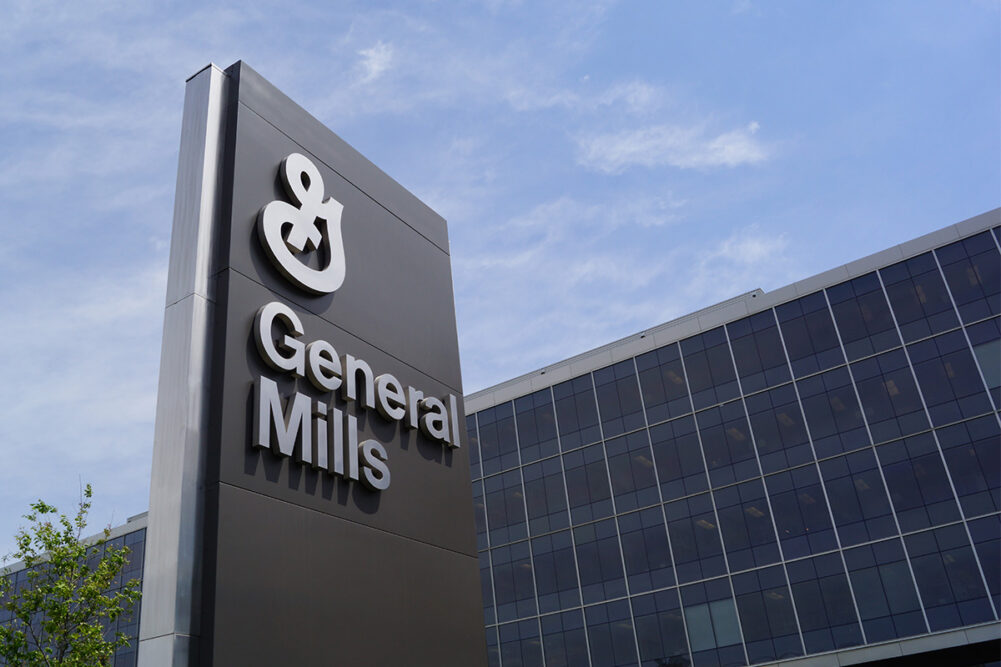MINNEAPOLIS — General Mills, Inc. is restructuring its organization to better align with new growth objectives. Jeffrey L. Harmening, chairman and chief executive officer, discussed recent changes to the leadership team during a May 20 virtual presentation at the BMO Capital Markets Farm to Market Conference.
Dana M. McNabb will step into the newly created role of chief strategy and growth officer. She currently leads the company’s Europe and Australia segment, and she will be responsible for key growth capabilities and strategic initiatives, Mr. Harmening said.
Sean Walker, who currently leads the company’s Asia and Latin America segment, will add Europe and Australia to his responsibilities and will lead both segments going forward.
John R. Church, currently supply chain officer, will transition to a new role as chief transformation and enterprise services officer. In this role, he will be responsible for leading enterprise transformation initiatives while managing the company’s global shared service function.
Paul Gallagher, who currently leads the North America supply chain for General Mills, will join the leadership team as chief supply chain officer.
“With those changes already announced, we are now going through the exercise of redesigning our structure through the rest of the organization,” Mr. Harmening said. “To be clear, this is not simply a cost-cutting exercise. The goal of this initiative is to free up resources from parts of our organization and redeploy them into more growth-facing areas, such as digital and data and technology, e-commerce and strategic revenue management and other capabilities that are critical to our future success.”
The organizational changes are part of the company’s Accelerate strategy, which it launched internally more than a year ago and unveiled to the investment community in February at the Consumer Analyst Group of New York virtual conference. Early efforts have translated into year-to-date market share gains in the company’s five global platforms of cereal, pet food, ice cream, snack bars and Mexican Food, Mr. Harmening said.
“Accelerate is really all about the choices we’re making to drive profitable growth and top-tier shareholder returns, including long-term goals of consistently generating 2% to 3% organic net sales growth, mid-single-digit operating profit growth and mid- to high-single-digit EPS growth,” Mr. Harmening said. “As a part of this strategy, we’ve aligned on initiatives to create competitive advantages and to win. These include boldly building our brands, relentlessly innovating, unleashing our scale and being a force for good.”
Recent transactions reflect General Mills’ strategic focus on reshaping its portfolio to enhance growth. In March, the company announced it had entered into a memorandum of understanding to sell its interest in its European Yoplait operations to French dairy cooperative Sodiaal, and in May, the company announced its acquisition of Tyson Foods’ pet treat business, which is expected to strengthen General Mills’ position in the fast-growing US pet food segment, Mr. Harmening said.
“With these two transactions, we’re taking significant steps toward reshaping our portfolio for faster and more profitable growth,” he said. “But we think there’s still more work to do to achieve our targeted growth exposure, and we remain committed to additional portfolio shaping through acquisitions and/or divestitures to further enhance our growth profile.”
Mr. Harmening also provided comments on General Mills’ plans for dealing with the significant inflationary pressure he predicted may affect a broad part of the company’s portfolio over the next 12 months.
“The first line of defense is our productivity, and General Mills generates as, I think, one of the, if not the leader, one of the new leaders in CPG when it comes to productivity savings, which have averaged about 4% a year for the last decade,” Mr. Harmening said. “And so that’s the first line of defense and defending margins. The second is pricing. And I started this by talking about our capabilities we’ve developed, and we’ve developed over the last number of years, a strategic revenue management capability that’s going to come in really handy over the next 12 months. It’s always good, but it’s going to be particularly important as we look over the next year.”





